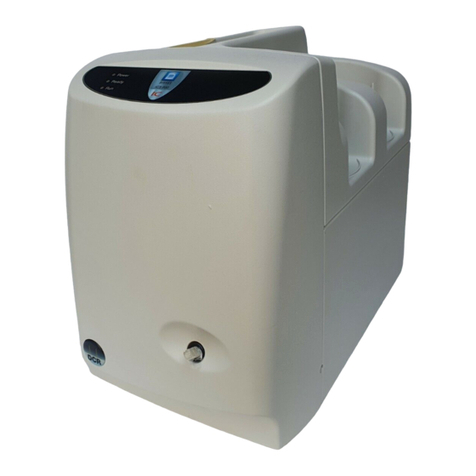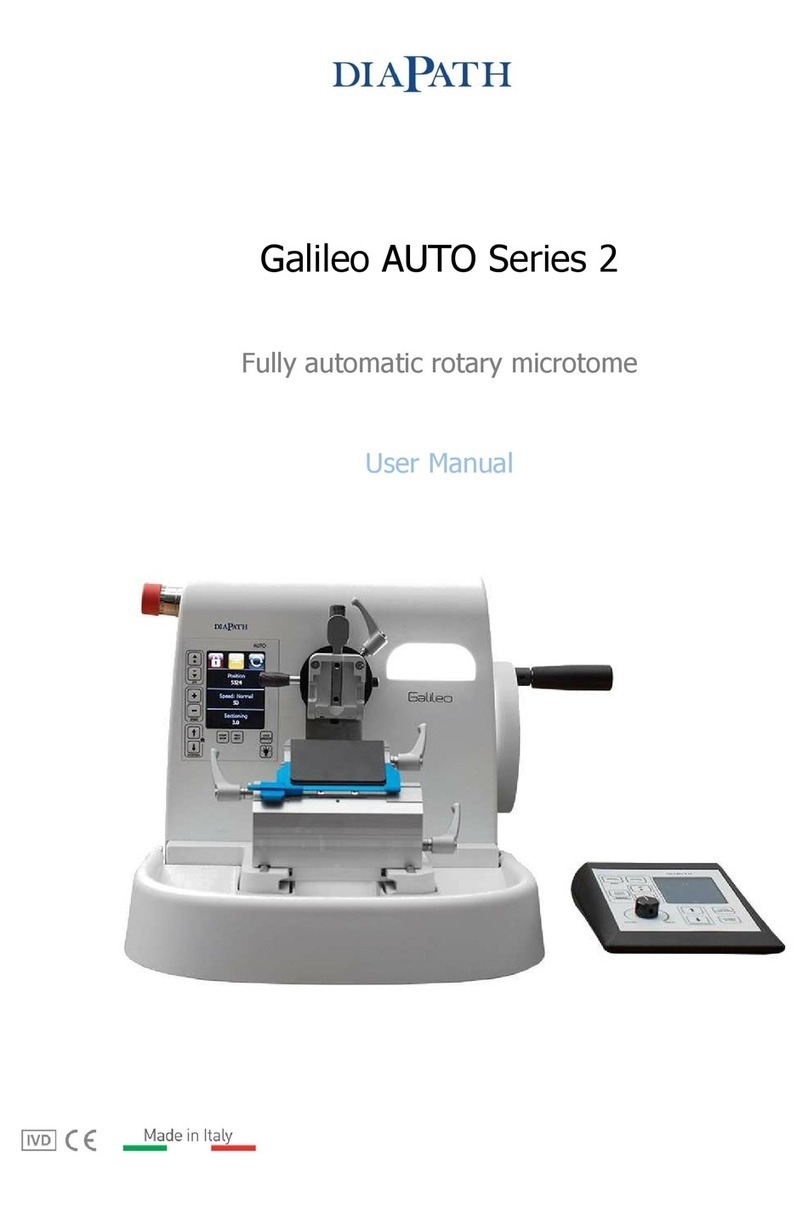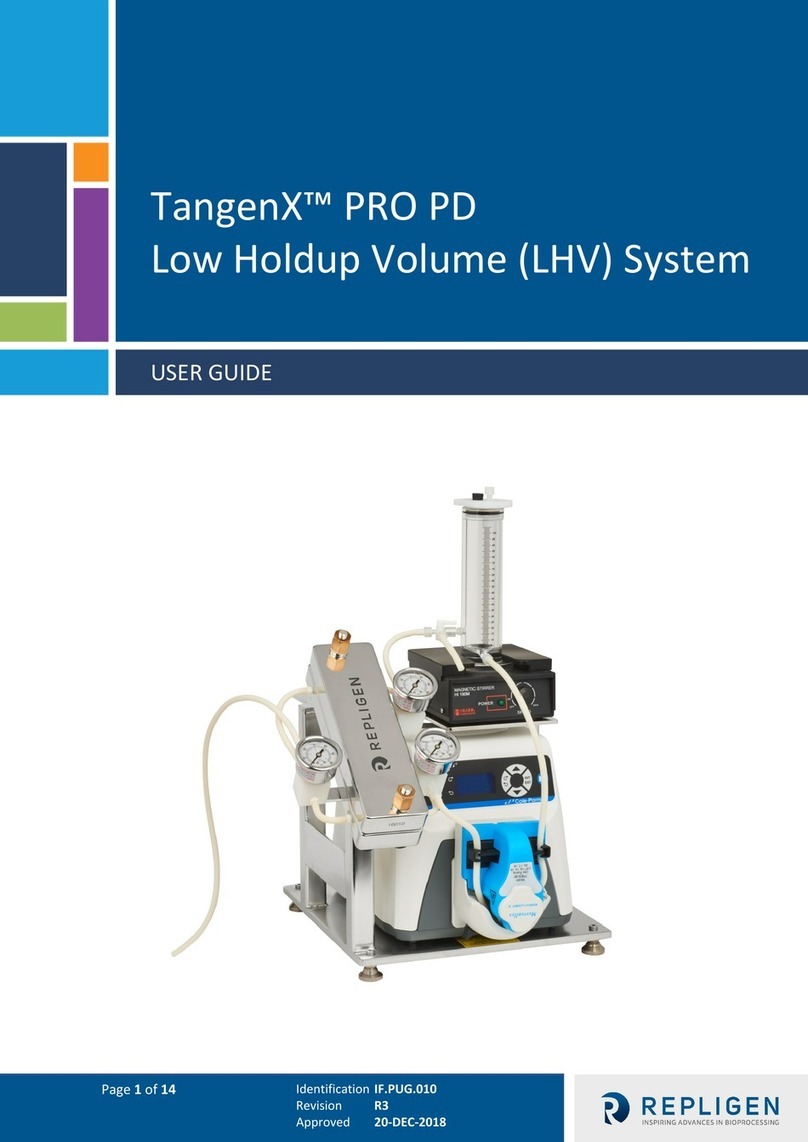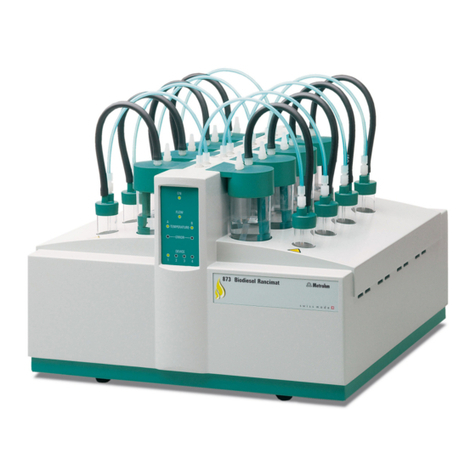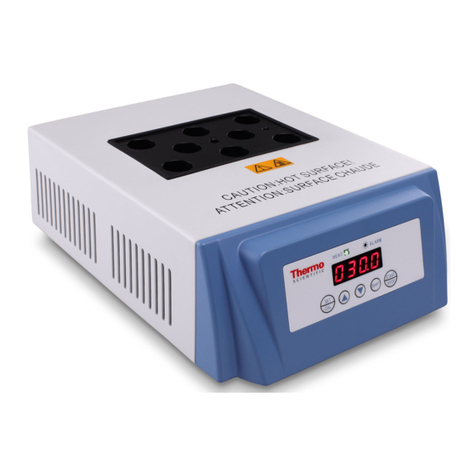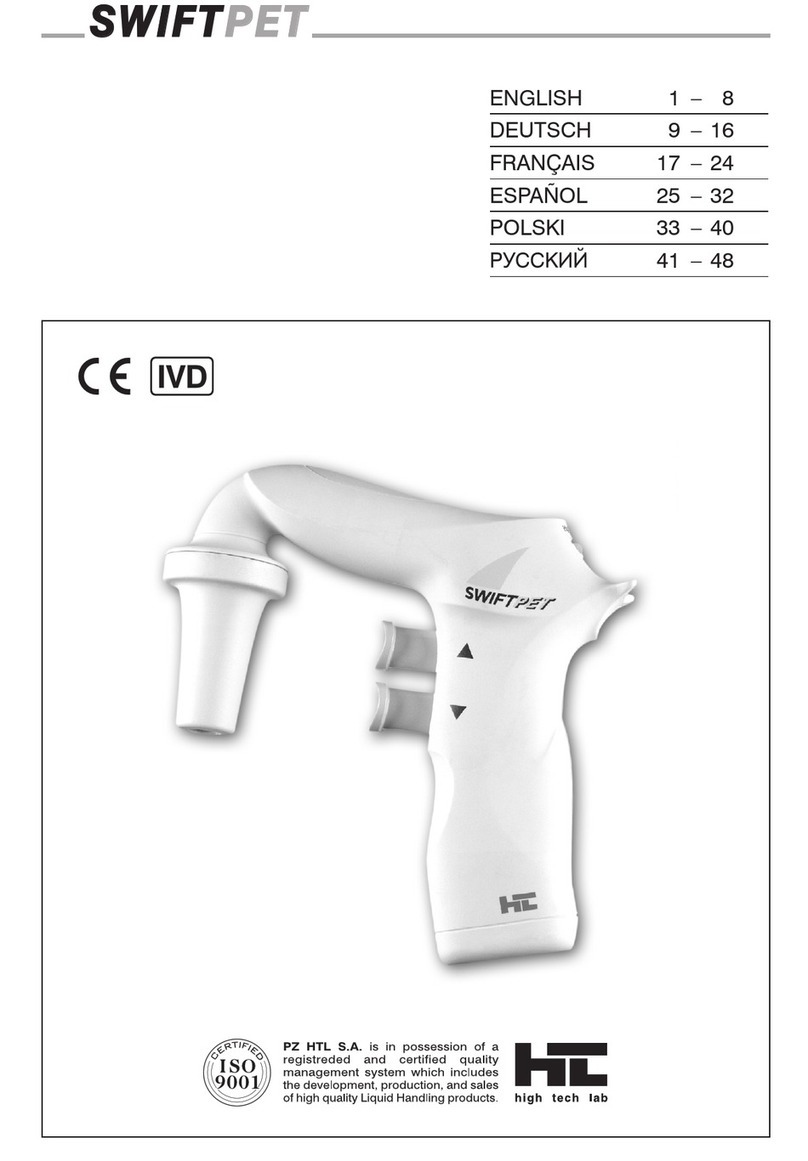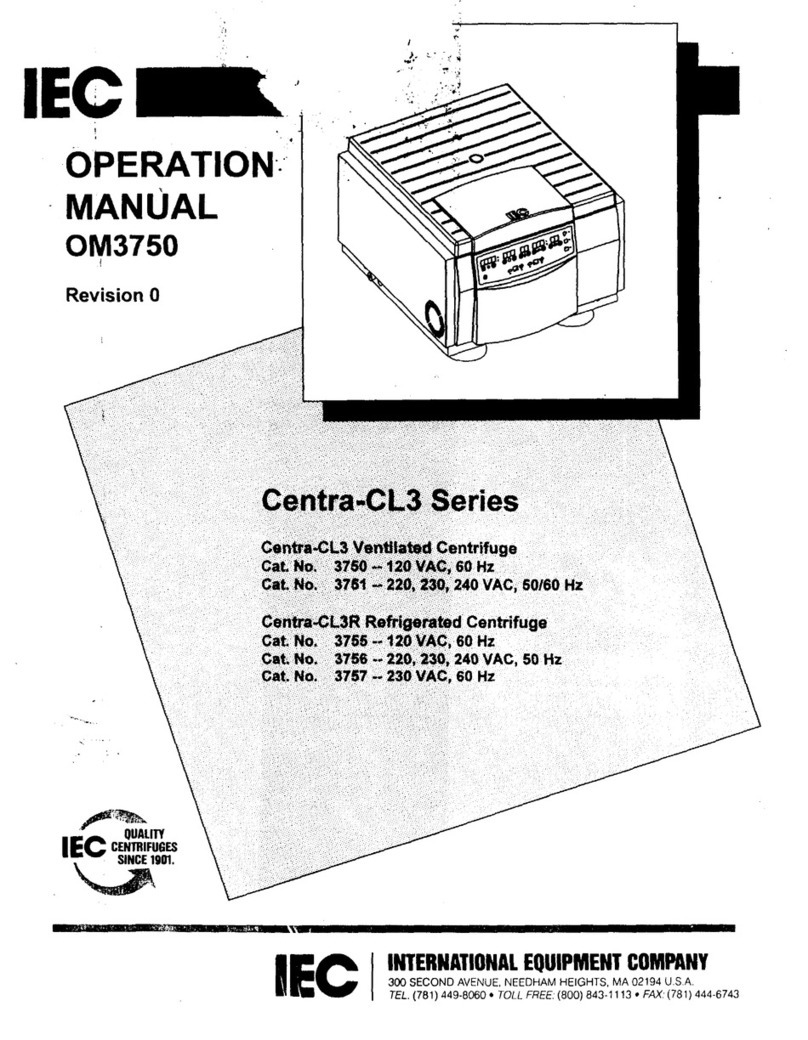Bosch Rexroth SMART Flex Effector User manual

R320103228 en
SMART Flex Effector

R320103228
The data specified only serve to describe the product. Any references to possible uses are
provided merely as a convenience and shall be understood as example applications or
suggestions. Catalog data may not be construed as guaranteed properties. The information given
does not release the user from the obligation of own judgment and verification. It should be noted
that our products are subject to a natural process of aging and wear.
© Bosch Rexroth AG. All rights reserved, including rights of disposal, utilization, reproduction,
processing, circulation and application for industrial property rights.
The title page contains an illustration of a sample configuration. The product as delivered can differ
from the illustration.
The original instructions have been prepared in German.

Table of contents
en
Table of contents
1About this documentation 6
1.1 Validity of the documentation 6
1.1.1 This documentation applies to the following products: 6
1.1.2 SFE material numbers 7
1.2Structure of safety information 8
1.3 Abbreviations 9
2Safety 10
2.1 Intended use 10
2.1.1 The following applications are approved for the product: 10
2.2 Improper use 11
2.3 Residual risks 11
2.4 General safety instructions 14
2.5 EMC standards 14
2.6 Personnel qualifications 15
2.7 Personal protective equipment 15
3Product description 16
3.1 Axial alignment 16
3.2 Data sheet 17
3.3 Scope of delivery 19
3.4 Product marking 20
4Assembly 21
4.1 Fitting the adapter plate 22
4.2 Fitting the SFE flange cover on the flange 23
4.3 SFE assembly on flange cover 24
4.4 Electrical assembly 24
5Desktop software: SFE tool as a file for download 26
5.1 Screen settings 27
5.2 Setting up the connection 29
5.3 Changing the language 31
5.4 Updating the firmware 32
5.5Export SFE configuration 34
5.6 Import SFE configuration 36
5.7 Using the console 38
5.8 Recording measurements 39
5.9Viewing and exporting service data 41
5.10 Using the testcases 42
5.11 Opening the Smart Flex Effector website 45
5.12 Viewing open source license texts 46

Table of contents
en
6Interface description 47
6.1 Pin assignment 47
6.2 Protocol 48
6.2.1 System connection and application concept 48
6.2.2 Serial interface RS-485 49
6.3 Structure of the commands 49
6.3.1 Fundamental structure of the commands 49
6.3.2 CRC checksum 50
6.3.3 Handling the checksum when working with the SFE tool 52
6.4 GET functions 53
6.4.1 Locking 53
6.4.2 Sensors 54
6.4.3 Diagnostics 56
6.4.4 LED modes 57
6.4.5 System 59
6.5 SET functions 62
6.5.1 Locking 62
6.5.2 Sensors 64
6.5.3 LED modes 65
6.5.4 System 68
6.6 CTR functions 69
6.7 Example communication 70
7Range of functions 71
7.1 Transformation chain 71
7.2 Handling 74
7.2.1 Initial temperature compensation when starting up and after each restart 74
7.2.2 Handling errors 74
7.2.3 Moving at high travel speed 80
7.2.4 Using the locked and unlocked transformation chains 80
7.3 Exemplary application cases 81
7.3.1 Exact alignment of the robot above a component 81
7.3.2 Connecting connector contacts 81
7.3.3 Determining the orientation of pallets 81
7.3.4 Joining μ fits 81
7.3.5 Measuring a tool changer 82
7.4 Displaying various operating states (LED modes) 82
7.4.1 OFF 82
7.4.2 STATUS 82
7.4.3 IO 84
7.4.4 GRAPH_XYZ 85
7.4.5 QUALITY 87
7.4.6 Quality_PEAK 87
7.4.7 SENSOR 87
8Third-party license information 88

6
About this documentation
1
en
1 About this documentation
1.1 Validity of the documentation
1.1.1 This documentation applies to the following products:
This product is a mechatronic component which is expanded by using firmware.
The SFE is a sensor-based compensation module with independent kinematics in six degrees of
freedom. It increases precision, e.g. in handling robots, and opens up new areas of application for
robots and Cartesian systems. The SFE was designed to compensate for a process-related offset in
the translations X, Y, Z and the rotations Rx, Ry, Rz. A mechanical locking feature is integrated into
the unit as standard.

7
About this documentation
1
en
1.1.2 SFE material numbers
with standard bolt circle flange ISO 9409-1 31.5-4-M5 on the effector side and with a selectable
robot flange:
•R124300001 robot flange: ISO 9409-1 31.5-4-M5
•R124300002 robot flange: ISO 9409-1 40-4-M6
•R124300003 robot flange: ISO 9409-1 50-4-M6
•R124300004 robot flange: Blank
SFE material numbers with standard bolt circle flange on gripper side: ISO 9409-1 31,5-4-M5,
and an adapter for the gripper side and, as with previous versions, with a selectable robot
flange:
Additional adapter plate in size: ISO 9409-1 40-4-M6:
•R124300005 robot flange: ISO 9409-1 31,5-4-M5 + adapter plate on gripper side: ISO 9409-1 40-
4- M6
•R124300006 robot flange: ISO 9409-1 40-4-M6 + adapter plate on gripper side: ISO 9409-1 40-4-
M6
•R124300007 robot flange: ISO 9409-1 50-4-M6 + adapter plate on gripper side: ISO 9409-1 40-4-
M6
•R124300008 robot flange: Blank + adapter plate on gripper side: ISO 9409-1 40-4-M6
Additional adapter plate in size: ISO 9409-1 50-4-M6
•R124300009 robot flange: ISO 9409-1 31,5-4-M5 + adapter plate on gripper side: ISO 9409-1 50-
4- M6
•R124300010 robot flange: ISO 9409-1 40-4-M6 + adapter plate on gripper side: ISO 9409-1 50-4-
M6
•R124300011 robot flange: ISO 9409-1 50-4-M6 + adapter plate on gripper side: ISO 9409-1 50-4-
M6
•R124300012 robot flange: Blank + adapter plate on gripper side: ISO 9409-1 50-4-M6
Additional adapter plate: Blank (without holes):
•R124300013 robot flange: ISO 9409-1 31,5-4-M5 + adapter plate on gripper side: Blank without
holes
•R124300014 robot flange: ISO 9409-1 40-4-M6 + adapter plate on gripper side: Blank without
holes
•R124300015 robot flange: ISO 9409-1 50-4-M6 + adapter plate on gripper side: Blank without
holes
•R124300016 robot flange: Blank + adapter plate on gripper side: Blank without holes

8
About this documentation
1
en
Additional materials available to order separately
•Material numbers (flange cover)
oR124000010 ISO 9409-1 50-4-M6
oR124000011 ISO 9409-1 40-4-M6
oR124000012 ISO 9409-1 31.5-4-M5
oR124000013 Blank
•Optional: Material numbers (adapter plate):
oR124000020 ISO 9409-1 50-4-M6
oR124000021 ISO 9409-1 40-4-M6
oR124000022 Blank
This documentation is intended for assembly personnel and service technicians.
Caution
This documentation contains important information for the proper and safe
installation and commissioning of the product.
This documentation, especially the section "Safety instructions", is to be read
completely before working with the product.
1.2 Structure of safety information
Hazard classification
The hazards that can occur at the machine are divided into the following classes:
•Danger
•Warning
•Caution
•Caution
Danger
This warning notice indicates a hazard with high risk. If the safety regulations are not observed, there
is a risk of death or severe injury.
Danger
Type and source of hazard
Hazard consequence
Remedy

9
About this documentation
1
en
Warning
This warning notice indicates a hazard with moderate risk. If the safety regulations are not observed,
the hazard may result in death or serious injury.
Warning
Type and source of hazard
Hazard consequence
Remedy
Caution
This warning notice indicates a hazard with low risk. If the safety regulations are not observed, the
hazard may result in minor injuries.
Caution
Type and source of hazard
Hazard consequence
Remedy
Caution
This warning notice indicates a hazard with low risk. If the safety regulations are not observed, the
hazard may result in damage to property.
Caution
Type and source of hazard
Hazard consequence
Remedy
1.3 Abbreviations
The following abbreviations are used in this documentation:
Abbreviation Meaning
GUI Graphic User Interface
SFE Smart Flex Effector
1 Abbreviations

10
Safety
2
en
2 Safety
2.1 Intended use
As a sensor-supported compensation element for robots and Cartesian systems, the SFE serves as a
process-related offset in the translations X, Y, Z and the rotations Rx, Ry, Rz.
Intended use also includes compliance with the applicable legal provisions and safety regulations, and
the operating, maintenance, and servicing requirements prescribed by the manufacturer.
Any use beyond this is considered improper. The manufacturer shall not be liable for damage resulting
thereof. Any associated risk shall be borne by the operator.
The SFE is intended for industrial and industry-related applications.
Within the meaning of intended use, the SFE is not a safety component.
2.1.1 The following applications are approved for the product:
•Flange-mounting to a handling system between the flange plate and a tool, such as a gripper.
•Integration into a machine/system or attachment to a robot. The applicable directives must be
observed and adhered to.
•The SFE may be used for passive compensatory movements and transfers of position.
•The SFE may be unlocked for the duration of handling process with active contact of tools and a
workpiece or device and during the necessary advancing and moving away processes. For transfer
journeys or general movements at higher speeds, the SFE must be operated in a locked state.
During these process stages, the status query of the locking state must be capable of ensuring that
the state is not changed unexpectedly.
•The SFE may only be used within the framework of its technical data. These must be safeguarded
using further measures, if applicable.
•The SFE may only be positioned vertically in the handling process (main axis "z" in the gravitational
direction).

11
Safety
2
en
2.2 Improper use
Using the product in any other way than as described under "Intended use" is considered to be misuse
and is therefore not permitted.
Bosch Rexroth AG will not accept any liability for injury or damage caused by misuse of the product.
The risks associated with any misuse of the product shall be borne by the user alone.
Misuse of the product includes in particular:
•Use of any kind to transport persons.
•Misuse of the SFE as collision protection.
•Moving the SFE to the position compensation end position. The end positions must be monitored in
the LED mode STATUS (see section STATUS).
•The SFE is a dynamically excited oscillation system. As it must be prevented from reaching the
position compensation end positions, it is recommended that you start the system with a travel
speed lower than 100 mm/s when setting up applicative processes in an unlocked state.
•Oscillating movement patterns must be avoided during operation in an unlocked state, as this may
cause damage to the device.
2.3 Residual risks
Risks of damage, failure or destruction are:
•Removing the SFE from the handling system
•Massive force impact due to incorrect use
•Collision
•Incorrect connection to power
Warning
Exceeding the mechanical limit values
Exceeding the mechanical limit values may overload and destroy the mechanical
system components. Components which become loose may lead to personnel
injury and material damage.
Only use the SFE within the permitted operating limits.
Do not carry out any transfer journeys or oscillating movements in an unlocked
state.

12
Safety
2
en
Caution
Inactive protective measures
The transmission and processing of incorrect sensor data may lead to contact and
unexpected system behavior.
When using the SFE, limit the machine movement by using suitable protective
measures.
The SFE may only be used on systems and equipment with the protective
measures intended for the system.
Only operate the SFE if the protective measures are enabled.
Only move the system by teaching with the SFE if the safety area is active.
If the protective measures are disabled, only operate the SFE in the control
state: "manual with reduced travel speed".
Caution
TPE bellows
If the bellows are exposed to oil and grease for a longer period of time, this may
lead to damage. Processes in which an absence of PWIS must be guaranteed may
be influenced by this.
Avoid wetting and residues, and remove these promptly.
Avoid mechanical damage which may cause tears/holes in the bellows.
Do not expose the SFE to applications where PWIS conformity is required.
Caution
Warm-up behavior
Temperature-related behavior can negatively affect the sensors for environment or
application-specific influences during operation.
By way of regular plausibility checks, ensure that the sensors are working
correctly.
Compensate for possible changes to the sensor setting by regularly locking and
unlocking.

13
Safety
2
en
Caution
Non-observance of the technical specifications regarding voltage
If the connection data is not observed, the SFE and the locking mechanism may
become damaged or malfunctions may occur.
Observe the maximum DC supply cable length defined in the technical data.
Ensure that the voltage at the device is within the stated tolerances.
Caution
Interface fault due to unearthed cables
Unearthed cables may cause an interface fault and incorrect transmissions.
Earth the cable shield.
Caution
Damage and short-circuit due to incorrect insertion of the connector
Incorrectly inserted connectors and bent pins may cause damage to the SFE and
short-circuits.
Ensure that the connector is inserted in the correct position when connecting
the cable, and do not bend any pins.
Caution
Damage and short-circuit due to tension on the connection cable
Tension on the connection cable pins may cause damage to the SFE and short-
circuits. This may cause changes to the behavior of the SFE.
Avoid tensile stress on the cable.
Caution
Short-circuit due to connecting the live connector
If the connector is live, connecting it may cause damage to the SFE and short-
circuits.
Ensure that the SFE is disconnected from power before connecting or
disconnecting the cable.

14
Safety
2
en
2.4 General safety instructions
•The SFE has no protective measures against contact with other objects and no protective
equipment in the case of defects. Any protective measures must be carried out by the higher-level
machine/system.
•Highly dynamic processes may lead to overloading of the SFE and require corresponding safety
measures.
•Observe the applicable accident prevention and environmental regulations.
•Observe the safety rules and regulations of the country in which the product is used.
•Only use Bosch Rexroth products when they are in a technically perfect condition.
•Observe all notices on the product.
•Persons who mount/install, operate, disassemble or maintain Bosch Rexroth products must not be
under the influence of alcohol, other drugs or medications which might affect their judgment or slow
down their reactions.
•Only use manufacturer-approved accessories and spare parts in order to exclude any hazards to
personnel caused by unsuitable spare parts.
•Comply with the technical data and environmental conditions stated in the product documentation.
•If unsuitable products are installed or used in safety-critical applications, this may lead to
uncontrolled operating statuses in the application which can cause personal injury and/or damage
to property. You should therefore only use product in safety-critical applications if this use has been
expressly specified and permitted in the product documentation.
•You may only commission the product once it has been verified that the end product (for example
a machine or system) into which the Bosch Rexroth products have been installed complies with the
country-specific requirements, safety regulations and standards for the application.
•Except where otherwise documented, Bosch Rexroth products are intended for operation in
networks which have been locally, physically and logically secured, with access restricted to
authorized persons and not classified in accordance with IEC 62443-4-2.
•Only firmware or a GUI (SFE tool) provided by Bosch Rexroth may be used. This is provided by the
Bosch Rexroth service team or via the Bosch Rexroth website.
2.5 EMC standards
EMC standards have been tested and positively confirmed in accordance with the following standards.
Emitted interference according to
EN 61000-6-4
Passed
Interference immunity according to
EN 61000-6-2
Passed

15
Safety
2
en
2.6 Personnel qualifications
The activities described in this document require fundamental knowledge of mechanical and electrical
engineering principles and familiarity with the associated technical terminology. In order to ensure safe
use, these activities may therefore only be performed by appropriately trained specialists or instructed
persons working under the supervision of a trained specialist.
A trained specialist is a person whose professional training, knowledge, experience and familiarity with
the relevant regulations enable him/her to assess the tasks assigned to him/her, identify potential
hazards and take appropriate safety precautions. A trained specialist must adhere to the relevant
technical rules and standards.
2.7 Personal protective equipment
For safety reasons, safety shoes must be worn while assembling the SFE. All items of personal
protective equipment must be intact.

16
Product description
3
en
3 Product description
The SFE is a compensation element to compensate for deviations in alignment or tolerance, for
example, during a joining process with a robot or Cartesian system.
This compensation is generated passively via a freedom of movement of the compensation of
elements in all 6 degrees of freedom.
The deflection is monitored via sensors and can be read via an RS-485 interface (see Interface
description).
It is also possible to lock the system. This blocks the system’s freedom of movement. The user can
choose to control the locking mechanism via the RS-485 interface or digital I/O. The element is
supplied with a DC voltage of 24 V via the connection cable.
3.1 Axial alignment
The SFE axial alignment is designed based on the standard axis pattern for robots.
Axes

17
Product description
3
en
3.2 Data sheet
Designation Unit Value
Housing material Aluminum, anodized
Protection class IP54
Maintenance Lifelong lubrication
Mass of system (without adapter plate) [kg] 1.3
Manipulator connection Standard: ISO 9409-1 31.5-4-M5 /
40-4-M6 / 50-4-M6
Permissible ambient temperature during
operation
[°C] 5 – 50
Permissible ambient temperature during
storage and transport (thawing and freezing
not permissible)
[°C] -20 - 70
Compensation path XY [mm] ± 3
Compensation path Z [mm] - 3
Compensation angle XY [°] ± 3.4
Compensation angle Z [°] ± 6.8
Max. handling weight [kg] 6
Operating limits in the locked state:
Max. sum of load torques Mx, My (locked
state)
[Nm] 15
The permissible torque stated here relates to a reference point within the SFE. When determining the lever arm from the
tool-side flange, a compensation distance of 33 mm must be added (the shoulder height of the tool-side flange is not
included in the compensation distance).
Max. load torque Mz (locked state) [Nm] tbd
Max. load Fz (compressive force, locked state) [N] tbd
Operating limits during the locking
process:
Max. sum of load torques Mx, My during
locking process
[Nm] tbd
Max. load Fz during locking process
(compressive force)
[N] 55

18
Product description
3
en
Designation Unit Value
Restoring forces in the unlocked state:
Breakaway force spring [N] 6
Spring rate path compensation in axial
direction XY of 0-2 mm
[N/mm] 12
Spring rate path compensation in axial
direction Z
[N/mm] 12
Max. spring rate path compensation in axial
direction rX, rY
[Nm/°] tbd
Max, spring rate in stroke range (path
compensation in axial direction rZ)
[Nm/°] tbd
Locking time (vertically suspended load) [s] < 0.4
Properties of position feedback: At a constant temperature of 25°C
Typical translative error (a standard deviation) [mm] 0.077
Typical repeatability (a standard deviation) [mm] 0.009
Typical angle alignment error (a standard
deviation)
[°] 0.157
Typical repeatability (a standard deviation) [°] 0.02
Sampling rate (determined at a baud rate of
921600 Bd)
[ms] 10
Power supply voltage [V] 24 DC +20%/-10%
Rated current [A] 1
Maximum current when locking/unlocking [A] 1.5
Maximum cable length of the DC supply [m] 5
Maximum cable length of the RS485 interface
(point-to-point connection)
[m] 12
2 Data sheet
If used as intended, the SFE is designed for 1 million locking and unlocking processes.
You can find example applications and an orientation for guideline values for a “Pick and Place”
application in the section: Exemplary application cases.

19
Product description
3
en
3.3 Scope of delivery
No. Graphical representation Description
1
•SFE (1)
•Screws M4x10 (6x) TORX ISO 14583 for fastening
the flange (3)
2
•Connection cable M8x1, 8-pin
3
•Flange (3), the required version must be selected:
ISO 9409-50-4-M6 / R124000010 ISO 9409-40-4-M6 /
R124000011 ISO 9409-31,5-4-M5 / R124000012 Blank /
R124000013
•Screws and cylinder pin included in the scope of
delivery
•Assembly by the customer

20
Product description
3
en
No. Graphical representation Description
4
•Adapter plate (4) optional; various versions available:
ISO 9409-50-4-M6 / R124000020
ISO 9409-40-4-M6 / R124000021
Blank / R124000022
•Screws and cylinder pin included in the scope of
delivery
•Assembly on the SFE (core module) (1) by the
customer
3 Brief instructions
3.4 Product marking
Nameplate
The product nameplate bears the following information:
Labeling Meaning
MNR Material number
SN Serial number
FD Date of manufacture
4 Nameplate
This manual suits for next models
1
Table of contents
Other Bosch Laboratory Equipment manuals
Popular Laboratory Equipment manuals by other brands
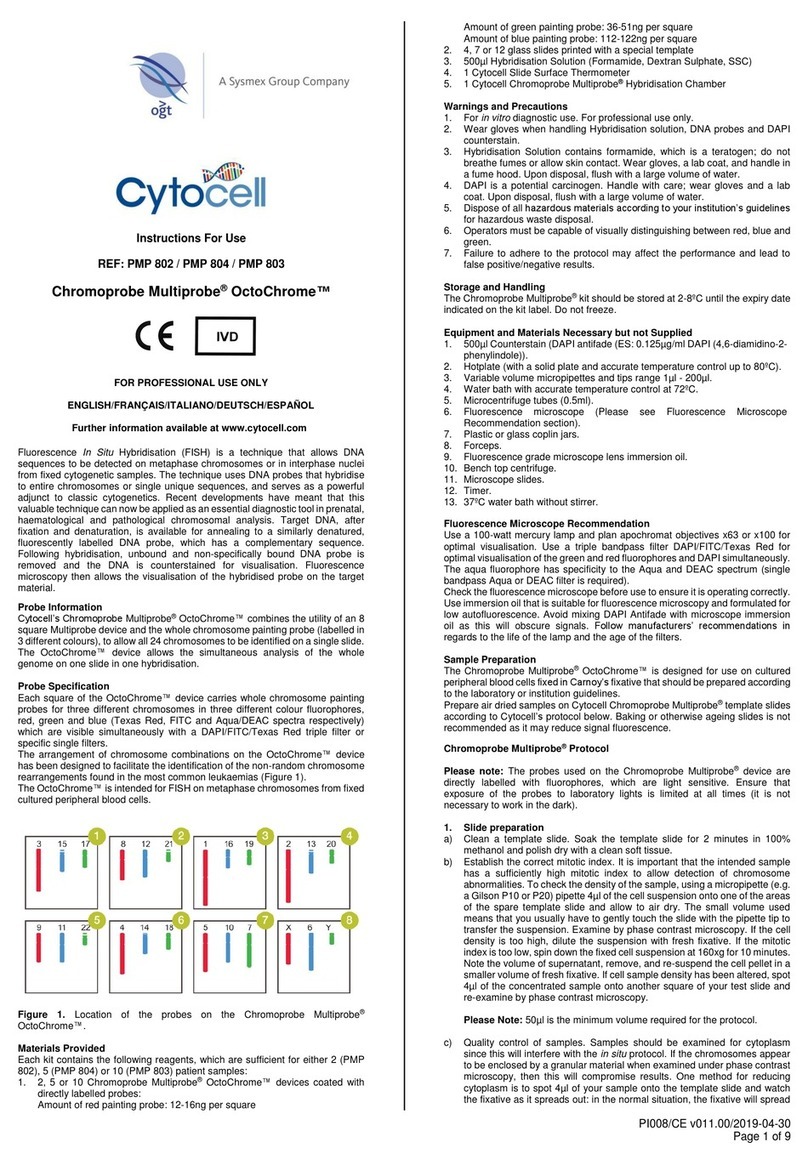
SYSMEX
SYSMEX ogt Cytocell Multiprobe OctoChrome Instructions for use
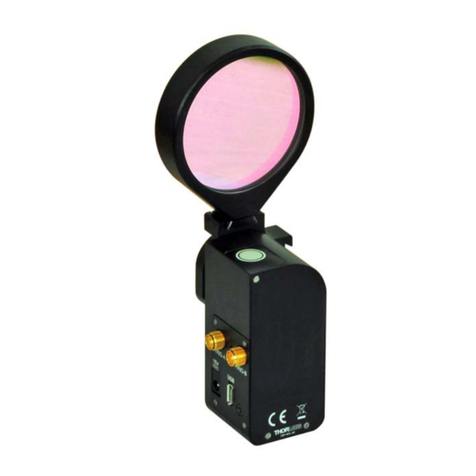
THORLABS
THORLABS MFF101 user guide
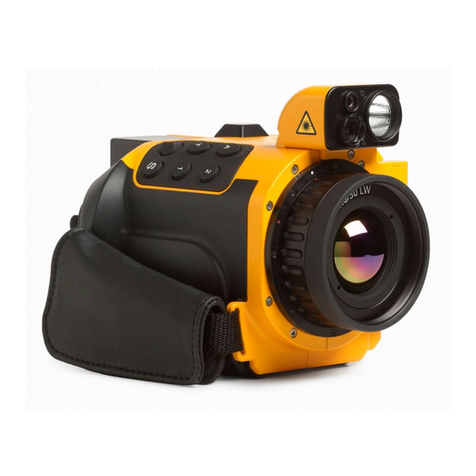
Fluke
Fluke tix640 user manual

Electrothermal
Electrothermal MEL-TEMP 1101D Instruction book
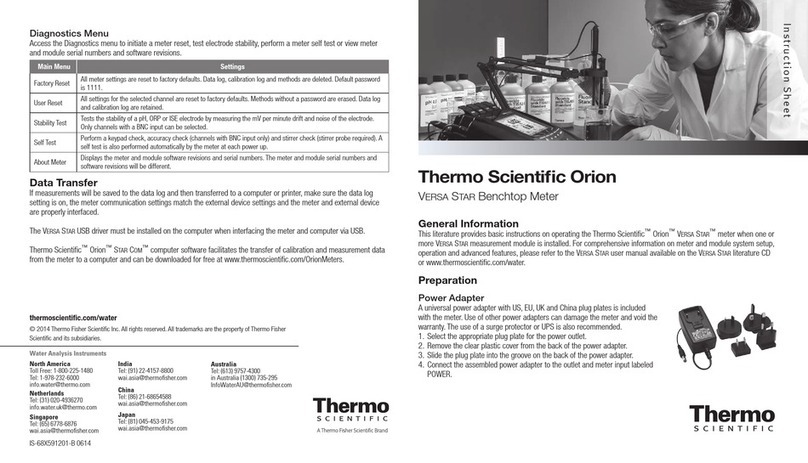
Thermo Scientific
Thermo Scientific Orion Versa Star instruction sheet

Huvitz
Huvitz SMART BLOCKER HBK-410 user manual


